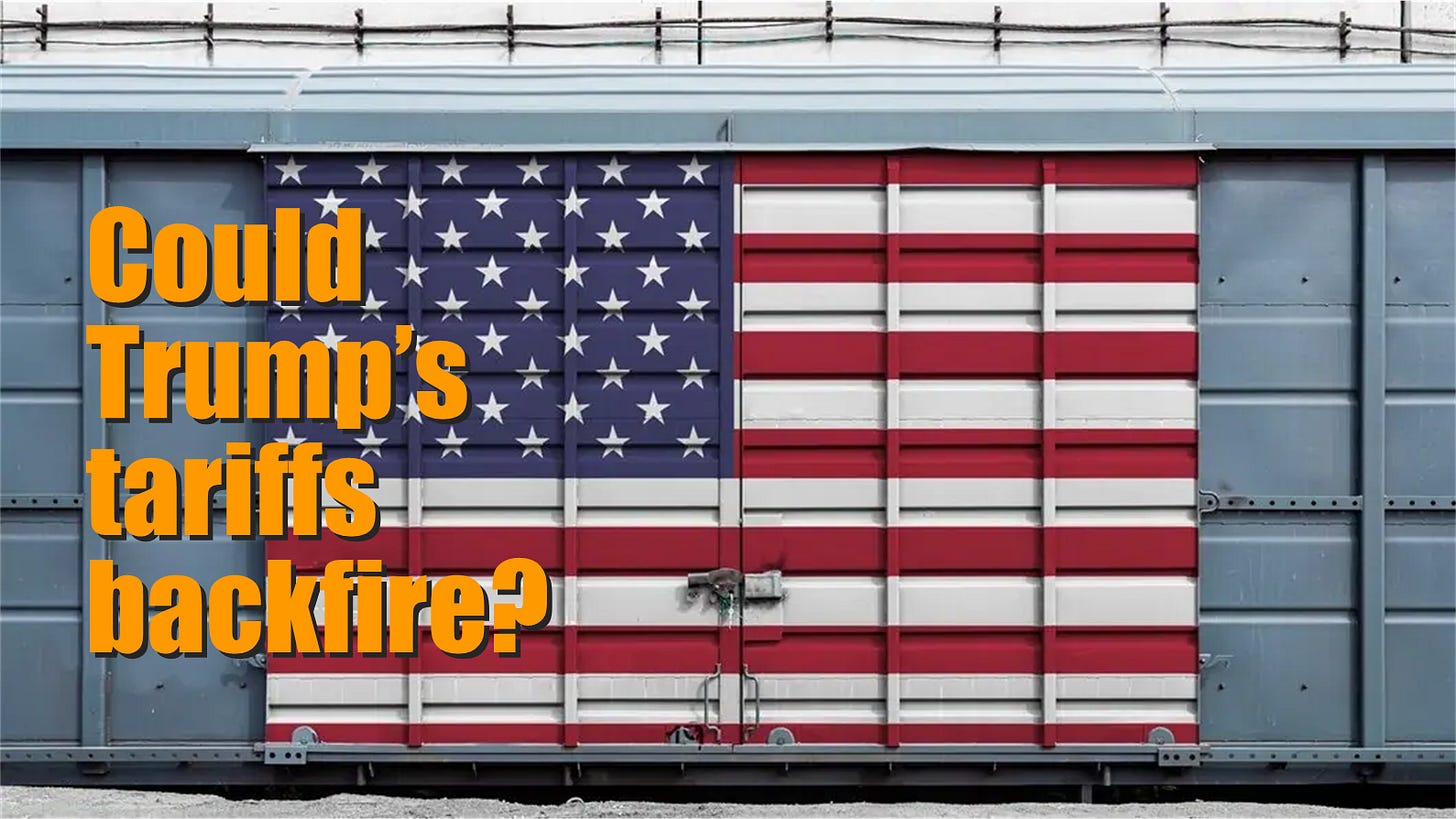President Trump decided to impose 25% tariffs on Mexico and Canada, two of the largest US trade partner nations. He justified the move by citing uncontrolled migrations and drugs flowing into the US, as well as "massive subsidies" the US extended to Mexico and Canada in terms of trade deficits. By the sounds of it, Trump is far from done with the tariff stick.
He suggested that China was next and today reiterated his threat to impose 100% tariffs on BRICS nations if they persist in their plan to create a new trade settlement currency to replace the US dollar in international trade. Furthermore, Trump's nominee for Commerce Secretary Howard Lutnick backs the idea of a universal 25% tariff. Lutnick didn't advocate the measure as a way to exert pressure on other countries or means of negotiating leverage (as Trump has successfully done against Colombia earlier this week), but as a positive measure to bring manufacturing back to the US.
Tariffs could reignite inflation
Seen in this way, tariffs make sense, but they will prove risky and could boomerang to hurt the US economy as well as the dollar. Namely, the trade deficit, which Trump cited as one of the reasons to impose tariffs on Mexico and Canada, is one of the two great inflation pressure release-valves for the US economy (the other one being the stock market). When the US imports goods and services from other countries, it pays foreign exporters.
Much of the money spent in this way stays in those nations' current account with the Fed and ends up recycled in US Treasuries, in effect funding the US government. And as cheap goods from abroad enter US consumer markets and exert downward pressure on CPI inflation, the sums earned by foreign exporters do not, so they don't exert upward pressure on domestic prices. In effect, the trade deficit, which has just blown to an all-time-hith at $122 billion in December 2024 reflects the US economy exporting its monetary inflation to its trade partners.
The inflation jolt could be immediate
Imposing tariffs on large trade partners like Mexico, Canada, China and other BRICS nations will in fact begin to close the US trade deficit, but in doing so it could shut off an important inflation pressure-valve. As domestic manufacturing develops, the competition among producers should have a disinflationary effect, but only if the measure is successful and with a considerable delay.
The inflation jolt could be almost immediate: as foreign goods become more expensive because of the tariffs, domestic US producers will be increasing their own prices close to matching the new price level. Furthermore, as manufacturers bring their production capacities to the US they will almost inevitably put upward pressure on US wages, which could be the motherlode of CPI inflation. Labor is not easily substituted and every last company in the world needs workers.
If inflation re-accelerates, the dollar's purchasing power will suffer and this will only increase pressure on other countries, including the BRICS to seek alternatives to the US dollar as a trade settlement currency and reserve currency. The economic imbalances Donald Trump's administration inherited (including from the last Donald Trump administration) are complex and simple, straightforward measures could end up reaping unintended consequences and opposite outcomes.
Incidentally, Trump's Commerce Secretary nominee Howard Lutnick is the same patriotic Howard Lutnick, the longtime CEO of Cantor Fitzgerald who has been trying to move the clearing of US Treasury futures to Bank of England controlled LCH in London, for whatever weird reason, as I discussed in the 21 January TrendCompass titled, “U.S. Treasuries Clearing Affair: More Bad News for Britain?”
Earlier today I had the pleasure of joining the “Think BRICS” podcast for a more extensive discussion of the issues involved. The 60-min. interview is below:
To learn more about TrendCompass reports please check our main TrendCompass web page. We encourage you to also have a read through our TrendCompass User Manual page.
Trading signals for Key Markets, 31 Jan. 2025
With yesterday’s closing prices we have the following signals:
Keep reading with a 7-day free trial
Subscribe to I-System TrendCompass to keep reading this post and get 7 days of free access to the full post archives.






